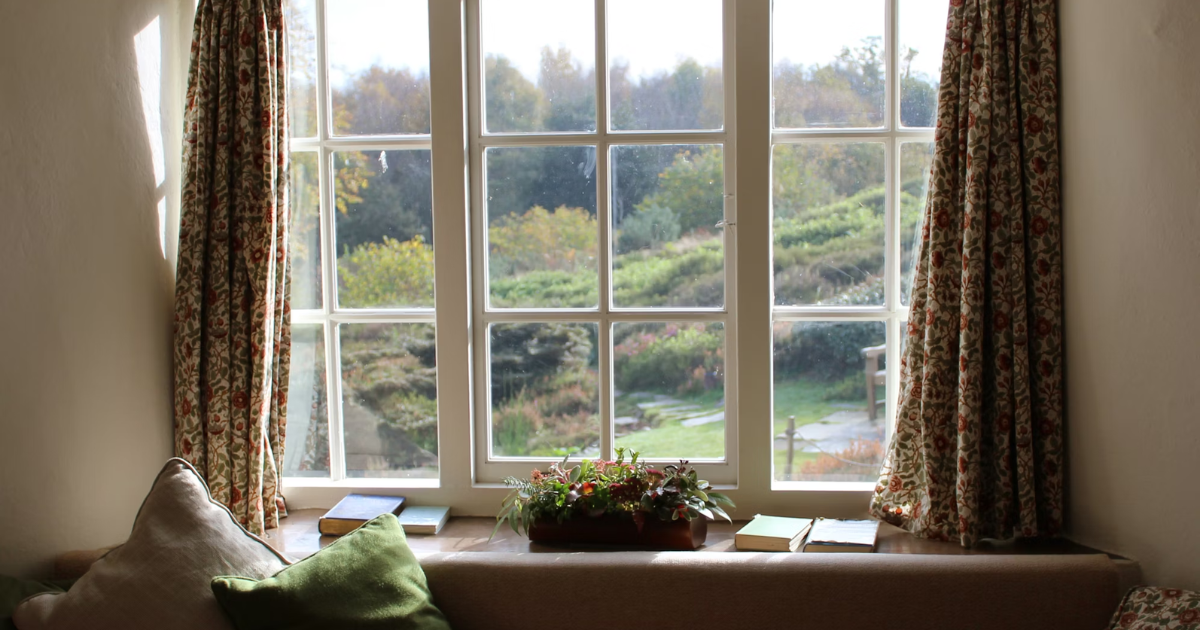The air quality in your home is a bigger health issue than many people realize, especially in Canada, where windows are closed for many months of the year. As houses are built to reduce air leakage and renovations aimed at reducing energy use become more common, the quality of the air you breathe can decline significantly unless you intentionally make things different. In my experience in my own home and working
with others professionally, I’ve learned that the effort is worth it.
Causes of Poor Indoor Air
There are three main sources of indoor air contamination: off-gassing from materials in the home, the rebreathing of air by people living in the place, and indoor mould growth. Fixing the indoor air quality issue is pretty simple, though people often attempt to improve indoor air quality incorrectly.
Manufacturers everywhere offer devices made to filter and re-filter indoor air but there are three fundamental problems with this approach. First, filtration is never completely effective at removing off-gassed contaminants from carpets, adhesives, cleaning solutions and the wide range of synthetics found in
almost every home. And the older the filter media gets, the worse it works.
Second, even if filtration were 100% effective 100% of the time, there’s still the problem of steadily declining air quality from breathing and rebreathing the same air by everyone under the same roof. No filter can turn old, stale garlic breath into great air.
And finally, no air filtration system can lower indoor humidity levels in winter and the mould growth this can trigger. All this is why a completely different approach makes sense.

Have Fresh Air and Keep Your Heat, Too
Getting more outdoor air inside is an approach that I know works well, and the simplest tactic involves using your existing exhaust fans more often and for longer periods of time. This applies to everything from range hoods to bathroom exhaust fans.
For every cubic foot of air these devices expel from your home, another cubic foot of fresh, outdoor air will be drawn into your house incidentally through cracks, leaks and whenever an exterior door is opened. The drawback is energy loss.
Simply drawing outdoor air indoors during cold weather means you’re losing all the heat you’ve invested in heating the indoor air the exhaust fans push outside. For situations with only moderate indoor air quality issues, increasing exhaust fan use is worth a try, and there’s a simple way to see how it’s working.
Window Condensation: The Canary in the Mine
The state of your windows in winter is a simple but effective way to assess indoor air quality. If interior glass surfaces stay dry during cold weather, it indicates that your place already has enough natural air leakage that excess humidity and contaminants leave naturally. Your indoor air is probably fine.
But if your windows get wet enough that water droplets run down the glass when it’s cold outside, then you know that indoor air quality is almost certainly lower than it should be. While moisture itself isn’t bad, besides indicating excess humidity, too much moisture can also trigger indoor mould growth on windows, walls and ceilings, making air quality even worse. All this is why I consider installing a heat recovery ventilator (HRV) to be the magic bullet for boosting indoor air quality in homes that need it. I’ve seen HRVs deliver astonishing results in many situations where poor indoor air quality caused health issues, including one in particular.

A True HRV Success Story
A friend of mine has a son who suffered from severe asthma from infancy to 13 years old. I was over at their place during winter doing drywall repairs one Saturday morning when I noticed mould on the walls and the attic access hatch and so much condensation on interior windows that I couldn’t even see outside. “How often do you have this level of condensation?” I asked Mom. “Every winter, all winter,” she told me. “The only time it lets up is when things get warm in the spring.”
I didn’t forget that conversation, and the next week I called over with a suggestion. “Your son’s asthma could improve if you had a heat recovery ventilator (HRV) installed. Would you consider putting one in? You’d have a control on the wall to manage the HRV. It’s easy to use.”
Would the control look like this thing I already have on my wall now?” asked Mom. “It has the word Venmar written on it.”
Venmar is one brand of HRV. She already had an HRV installed and ready to go in her home but didn’t know it and hadn’t used it for the years she’d been living in the place. “Push the button and let’s see what happens”, I suggested. Within a day all window condensation had disappeared (even though it was still cold outside), and that lifelong asthma problem her son had seen doctors about for years almost completely
disappeared.

Monitoring Indoor Air Quality
Bad air looks the same as healthy air, and this has posed a challenge for a long time. Are you congested and sick because of disease, or is it caused by low-quality air in your home? Until recently, you had little way of knowing, except perhaps by the state of condensation on your windows. Things are changing.
Small, economical, handheld devices are appearing on the market that work with a cell phone to monitor air quality, and these new tools can help a lot as you optimize your home. The Atmo Tube Pro is one unit I’ve been testing and like a lot. Charge it up, switch it on, pair it with your phone, and then see numbers for contaminants such as volatile organic compounds and particulate matter.
Can you trust these readings? It’s hard to know the absolute accuracy of devices like the Atmo Tube, but during my testing, it certainly was easy to see it react around even small amounts of smoke and breath. So, if
you’re the kind of person who values measuring air quality numerically to see how your efforts are working,
devices like these certainly have a part to play.

Installing an HRV
Heat recovery ventilators are box-shaped devices about the size of a couple of laundry baskets. Inside, there are two fans and a heat exchanger. One fan pushes indoor air outside while the other pulls the same amount of fresh outdoor air indoors. The two air streams pass through a heat exchanger that transfers 70% to 80% of the heat energy in the outgoing stream to the incoming stream, saving most of the heat you invested to keep warm.
The cost to install an HRV run is between $2,500 and $3,500. Most people have a professional install the unit, but you can save $1,000 to $1,500 if you do the work yourself.
Indoor air quality does not get the attention it deserves, especially by us Canadians living indoors with windows closed for so many months each year. Getting more fresh air into your home is the most effective way to ensure that your air is healthy and safe.

More Than Just Building Materials
When health-conscious people build a new home or do a major renovation, it’s not unusual to expend a lot of extra time, money and trouble on safer, non-standard building materials that promise less off-gassing of harmful substances. This is fine, as far as it goes, but it can never go far enough on its own. Even if your home
had no furniture, no carpets, and no finished wood surfaces, indoor air quality would still become an issue during winter without sufficient ventilation. Fresh air from outside is the only way to prevent the accumulation of stale air from breathing, excess humidity build up, and airborne trihalomethanes from showering with chlorinated water.
Steve Maxwell and his wife Mary live on a 90-acre modern homestead on Manitoulin Island, Ontario in a stone house they built with local materials beginning in 1985. Steve is Canada’s longest-running home improvement and how-to columnist and editor of Home and Property. He divides his time working on the land, building things large and small, and creating articles and how-to videos that teach sustainable, self-reliant, hands-on living skills.











